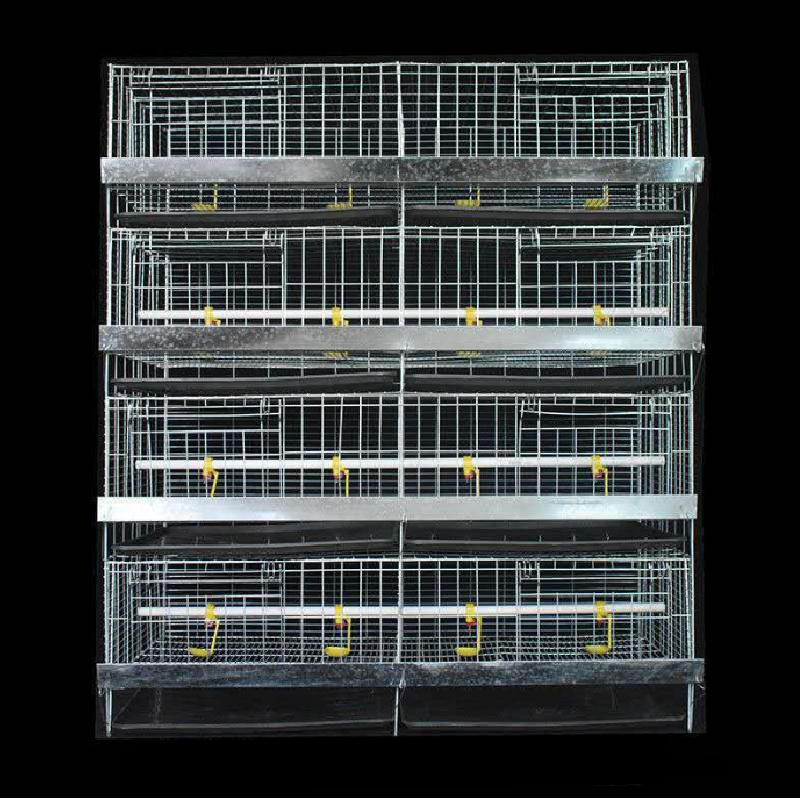Innovative Designs for Efficient Poultry Breeding Cages and Their Benefits
Oct . 13, 2024 03:50 Back to list
Innovative Designs for Efficient Poultry Breeding Cages and Their Benefits
Poultry Breeding Cages Enhancing Efficiency in Poultry Farming
Poultry farming occupies a significant place in the global agriculture landscape, providing essential proteins to millions of people while contributing to the livelihoods of farmers. As the demand for poultry products continues to rise, farmers are increasingly turning to modern farming practices to enhance productivity and efficiency. One such innovation is the use of poultry breeding cages, which have revolutionized the way birds are raised in commercial settings.
Poultry breeding cages are specially designed enclosures that facilitate the breeding, rearing, and management of poultry, typically chickens. These cages are engineered to provide optimum conditions for the birds while allowing farmers to maximize their space and resource utilization. Utilizing advanced materials and designs, modern poultry cages ensure adequate ventilation, lighting, and access to food and water, which are critical for the health and productivity of the birds.
One of the notable advantages of employing breeding cages is the efficient use of space. Traditional poultry farming often involves free-range systems, which can require vast areas of land. In contrast, breeding cages allow farmers to keep a higher density of birds in a smaller footprint, which can lead to increased production levels per square meter. This improved space efficiency is particularly beneficial for farmers in regions where land availability is limited.
Moreover, the use of cages can significantly enhance biosecurity measures. In conventional systems, where birds roam freely, the risk of disease transmission can be heightened due to close contact with wild birds and other animals. Cages help mitigate this risk by keeping poultry confined, reducing their exposure to potential pathogens. By controlling the environment in which the birds are raised, farmers can implement stricter biosecurity protocols, leading to healthier flocks and reduced mortality rates.
poultry breeding cages

Another critical aspect of poultry breeding cages is their contribution to improved egg production. Layers raised in cages often show better laying performance compared to their free-range counterparts. This is partially due to the controlled environment, which reduces stress factors such as predation and harsh weather, ensuring that the birds remain healthy and focused on laying. Additionally, cages can be designed to enhance the comfort of the birds, with features such as sloped floors and nest boxes, further promoting egg production.
Furthermore, the automatic systems incorporated into modern breeding cages facilitate efficient management practices. Automated feeding, watering, and egg collection systems reduce labor requirements and ensure that the birds receive consistent care. Farmers can monitor the conditions within the cages, such as temperature and humidity, using digital controls, which allows for prompt interventions when necessary. This level of precision in management not only saves time and labor but also enhances the overall welfare of the poultry.
Sustainability is an increasingly critical consideration in agriculture, and poultry breeding cages can contribute positively to this aspect. By maximizing production efficiency and minimizing waste, cage systems can lessen the environmental impact of poultry farming. Additionally, the ability to control feeding and other factors means that farmers can optimize resource use, which aligns with sustainable farming practices.
However, it is essential to consider the ethical implications of using poultry breeding cages. While they have many benefits, concerns about the welfare of birds kept in confined spaces must be addressed. Farmers are encouraged to implement cage systems that prioritize the well-being of the birds, ensuring they have adequate space, social interaction, and environmental enrichment.
In conclusion, poultry breeding cages represent a significant advancement in the farming industry, offering numerous benefits such as improved space efficiency, enhanced biosecurity, better egg production, and automated management. While ethical considerations concerning animal welfare must be taken seriously, the potential for these systems to contribute to sustainable and profitable poultry farming is undeniable. As the industry continues to evolve, adopting innovative practices like poultry breeding cages will be crucial in meeting the growing global demand for poultry products.
-
Hot Sale 24 & 18 Door Rabbit Cages - Premium Breeding Solutions
NewsJul.25,2025
-
Automatic Feeding Line System Pan Feeder Nipple Drinker - Anping County Yize Metal Products Co., Ltd.
NewsJul.21,2025
-
Automatic Feeding Line System Pan Feeder Nipple Drinker - Anping County Yize Metal Products Co., Ltd.
NewsJul.21,2025
-
Automatic Feeding Line System - Anping Yize | Precision & Nipple
NewsJul.21,2025
-
Automatic Feeding Line System - Anping Yize | Precision & Nipple
NewsJul.21,2025
-
Automatic Feeding Line System-Anping County Yize Metal Products Co., Ltd.|Efficient Feed Distribution&Customized Animal Farming Solutions
NewsJul.21,2025






